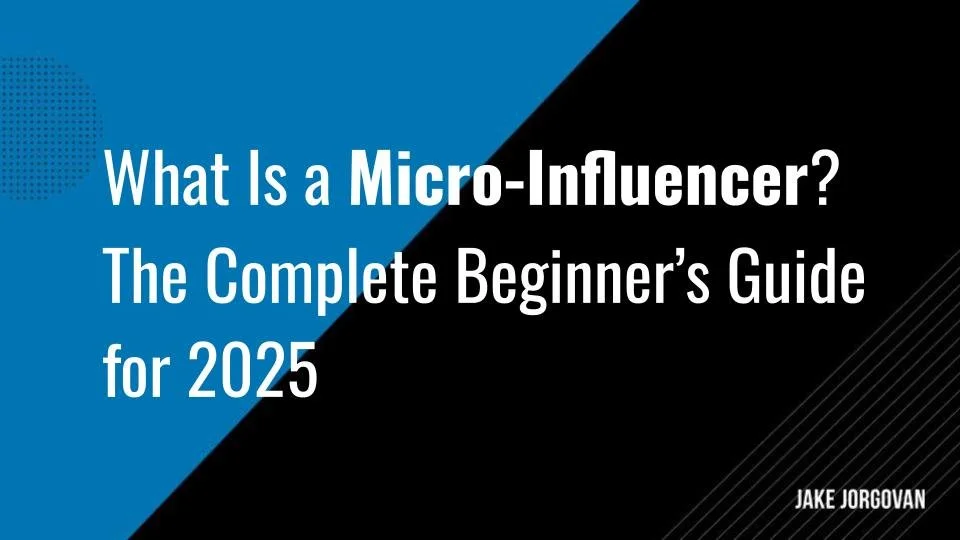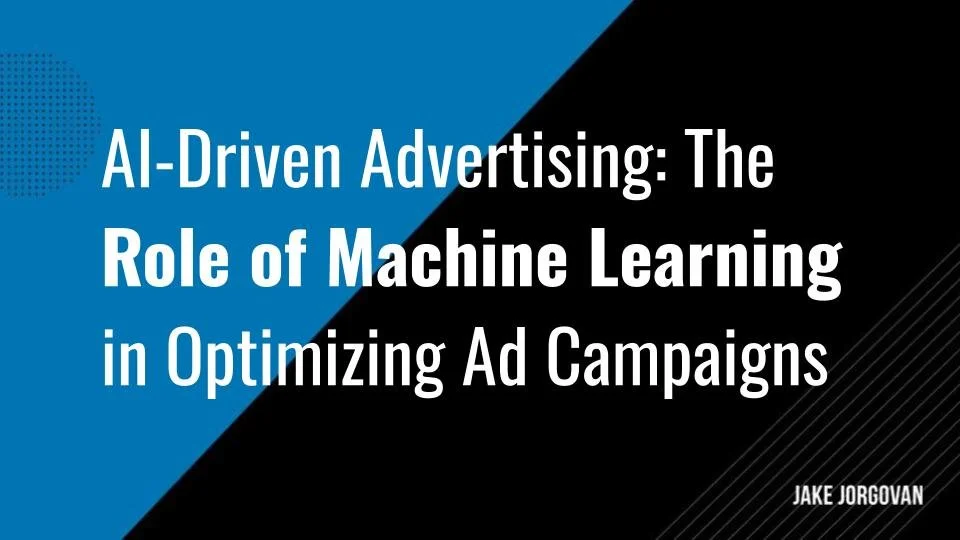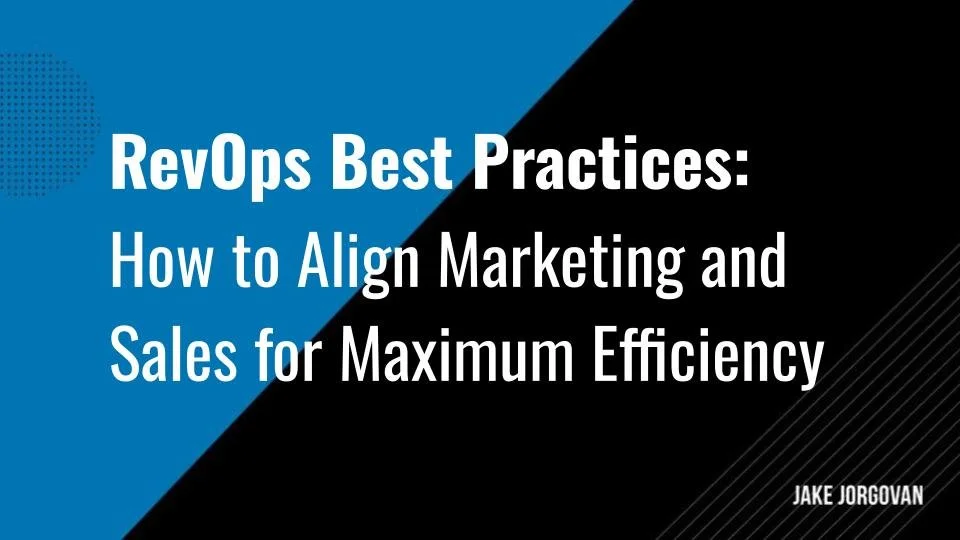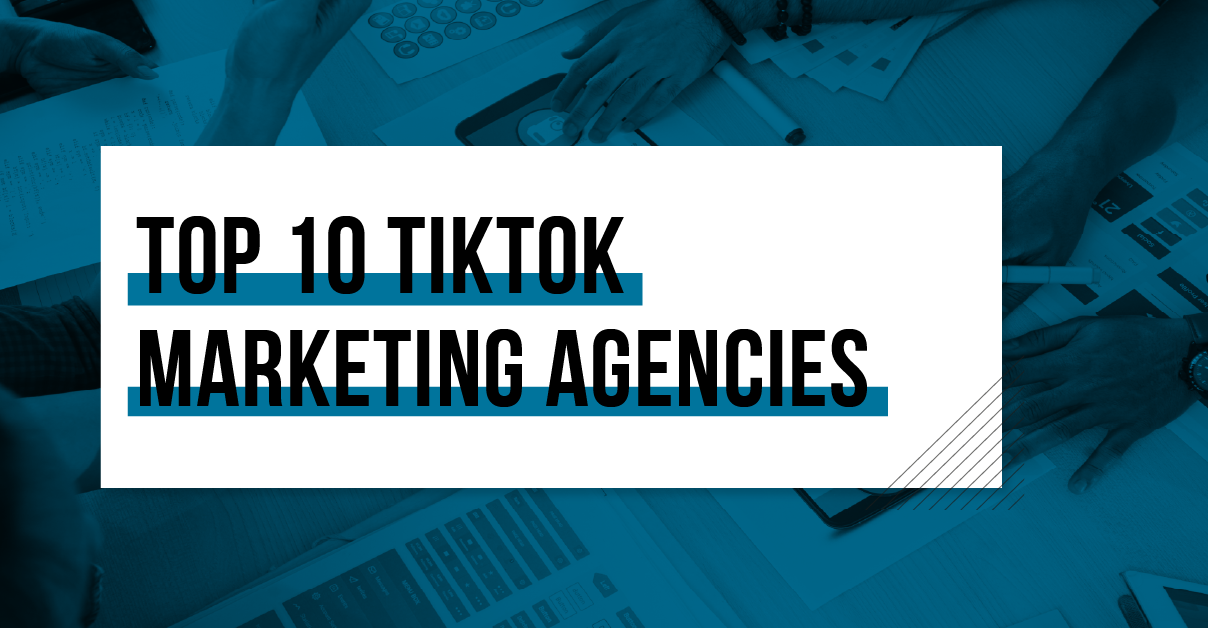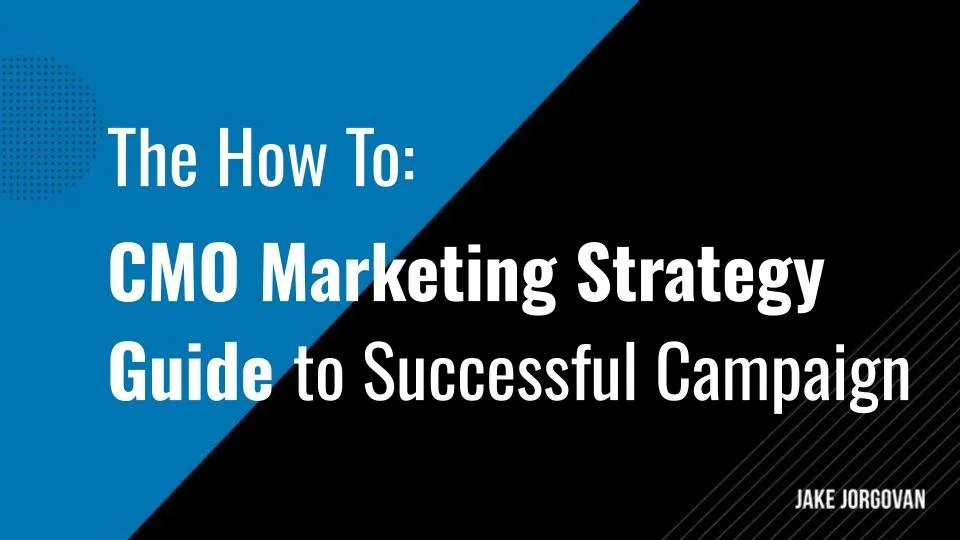AI-Driven Advertising: The Role of Machine Learning in Optimizing Ad Campaigns
Artificial intelligence is reshaping digital marketing.
Did you know that by 2025, AI technology in marketing is expected to reach $190 billion?
This surge underscores AI's growing role in advertising. Here are just the first three changes that pop to mind:
Machine learning algorithms analyze vast amounts of data, providing valuable insights into consumer behavior. These insights enable advertisers to make informed decisions, enhancing campaign performance.
Real-time analytics allow for immediate adjustments, optimizing return on investment.
AI-driven tools personalize user experiences, tailoring content to individual preferences. This personalization increases user engagement and conversion rates.
And as AI continues to evolve, its impact on advertising strategies will expand, offering numerous benefits to marketing professionals.
But more on that in a second.
Continue reading to discover how AI-driven advertising is transforming campaign optimization, targeting, and the future of digital marketing.
P.S. Ready to see the power of AI-driven advertising in action? Choose one of the best AI marketing agencies today, and let their experts show you how machine learning can optimize your ad campaigns for maximum impact and ROI.
What Is Machine Learning in Advertising?
Machine learning in advertising leverages advanced algorithms to analyze massive amounts of data, detecting patterns that reveal consumer preferences and behaviors.
This data-driven approach enables predictive analytics, a powerful tool that forecasts user behavior and purchase intent.
Basically, machine learning in advertising helps you go beyond traditional guesswork.
Pro tip: Research indicates that businesses using AI can boost conversion rates by up to 20% and can increase click-through rates by up to 50%.
Why Do You Need AI in Advertising?
AI is reshaping the advertising industry, offering a wide range of benefits that traditional methods can't match.
Here's why incorporating AI into your advertising strategy is a game changer:
Enhanced targeting for potential customers: AI-driven advertising leverages advanced algorithms to analyze vast amounts of data, identifying target audiences with remarkable precision. For instance, Coca-Cola uses artificial intelligence to dissect consumer data, leading to more effective marketing efforts and improved customer engagement.
Improved conversion rates through personalized experiences: AI tailors content to individual preferences, increasing the likelihood of conversion. Amazon's recommendation engine, powered by AI and neural networks, contributes to approximately 35% of its sales, showcasing the impact of personalized experiences on conversion rates.
Real-time adjustments and actionable insights: AI provides real-time analytics, allowing advertisers to adapt to market conditions instantly. The North Face employs AI-powered tools to offer personalized product recommendations in real time, enhancing user engagement and optimizing campaign performance.
Accurate predictions of consumer behavior: AI predicts future trends and consumer preferences using predictive analytics. Netflix utilizes advanced algorithms to forecast viewer preferences, which drives content creation and improves user retention.
Optimized bidding strategies and advertising budgets: AI enhances bidding strategies on platforms like Google Ads, maximizing return on investment. Advertisers using Google's AI-driven bidding strategies have reported increased conversion values, according to Google's case studies.
7 Use Cases for AI and Machine Learning in Advertising
Now that we’ve seen the benefits, here’s how to leverage AI and machine learning in advertising:
1. Optimize Ad Creative and Testing
AI-powered tools enhance ad creatives by generating dynamic ad content and enabling rapid testing.
Using natural language generation, AI can create numerous ad variations in real time, analyzing engagement rates and identifying high-performing ads.
This data-driven approach ensures more effective advertising strategies and faster campaign optimization.
There are plenty of examples to prove this, but let’s review the three for now:
Headway's AI Integration: The Ukrainian edtech startup Headway incorporated AI technologies like ChatGPT, Midjourney, and HeyGen into its marketing strategy, resulting in 3.3 billion ad impressions in the first half of 2024.
TikTok's Symphony Creative Studio: TikTok launched Symphony Creative Studio, an AI-powered video creation platform that allows advertisers to automatically generate video content based on product descriptions, create multiple ad versions, and remix existing ones. This tool enables real-time optimization and enhanced targeting, improving user engagement and conversion rates.
Memorable's AI-Based Co-Pilot: Memorable offers an AI-based co-pilot that guides advertisers through every creative decision, from conceptualizing ideas to assembling the final ad. It provides data-driven feedback for each decision, allowing for real-time adjustments and optimization of campaign performance.
Pro tip: We’ve found that pairing AI-driven testing with precise audience segments makes ad creative truly resonate. Don’t just test variations—align each version with distinct audience insights. Target your creative tests to specific user behaviors or preferences, and you’ll see clearer patterns in engagement rates and conversions.
2. Better Targeting and Personalization
AI-driven advertising enhances audience segmentation and targeting by analyzing vast amounts of data to identify potential customers.
For example, 75% of advertisers use AI for audience segmentation and targeting, leading to a 20% increase in ad campaign performance.
By leveraging machine learning algorithms, advertisers can deliver personalized experiences, improving user engagement and conversion rates.
This data-driven approach enables real-time adjustments to advertising strategies, optimizing return on investment and aligning with business goals.
Pro tip: We advise integrating real-time analytics into your advertising strategy. By doing so, you harness the power of immediate data to make informed decisions. The point is to ensure that your ads resonate with your audience segments dynamically, reflecting current market trends and user engagement effectively.
3. Budget Optimization and Cost Efficiency
Machine learning algorithms enhance advertising budgets by analyzing real-time data to allocate resources effectively.
For example, Klarna implemented AI-driven tools to manage its marketing campaigns, resulting in annual cost savings of approximately $10 million.
Here’s why that works.
First, when you leverage AI-powered analytics, you can make data-driven decisions, reducing cost per acquisition and maximizing return on investment.
Besides, you can use these tools for budget optimization. AI takes the guesswork out of ad spend, using real-time data and advanced analytics to ensure every dollar works smarter:
Pro tip: We recommend setting up automated bid adjustments based on real-time performance data. By doing this, you can allocate budget precisely where it's driving results, scaling down on underperforming segments and avoiding unnecessary costs, all while maintaining strong engagement rates and maximizing returns on investment.
4. Cross-Channel and Cross-Screen Advertising
AI enables advertisers to create cohesive advertising strategies across platforms, ensuring consistent messaging for individual consumers. AI-driven algorithms analyze user behavior to coordinate ads across devices, creating consistency without redundancy.
Studies show that brands using cross-channel strategies see a 24% increase in ROI, while 73% of consumers prefer ads tailored to their experiences.
Machine learning tools like Google’s Display & Video 360 allow advertisers to manage multi-platform campaigns in real-time, adjusting bids and messages based on audience insights.
5. Ad Bidding and Management
We already pointed to the fact that AI and machine learning algorithms enhance ad bidding strategies by analyzing real-time data to optimize bids for conversions.
Here’s a more in-depth look at how this works.
For example, Google's Smart Bidding uses machine learning to adjust bids, resulting in a 20% increase in conversion rates for advertisers.
Basically, AI-driven tools enable real-time adjustments to bidding strategies, ensuring optimal use of campaign budgets and aligning with business goals. This approach allows advertisers to make data-driven decisions, reducing cost per acquisition and maximizing return on investment.
Basically, these AI-powered analytics allow you to improve campaign performance and achieve better results.
6. Ad Placement
AI-driven tools determine optimal ad placement by analyzing user interactions, time of day, and digital platforms with the highest engagement rates.
Facebook’s AI-based ad placement system, for example, uses advanced algorithms to match ads with audience segments most likely to convert.
AI can also place ads in real time, maximizing visibility across a wide range of digital destinations.
7. Competitor Research
AI and machine learning drive competitive insights by analyzing ad trends, keywords, and testing strategies in real time.
Besides, AI reveals patterns in ad frequency and placement, pinpointing what works and where gaps lie. Use this info to adjust your own campaigns for higher performance based on proven competitor results.
And you have a wide array of options to include in your tool stack.
Tools like Adbeat and SpyFu track competitors’ ad structures and ad variations across platforms, offering data on which ads perform best and identifying keyword shifts.
Challenges and Limitations
Emerging technologies like quantum computing and generative AI are poised to transform AI-driven advertising.
Quantum computing could enable real-time optimization of complex bidding strategies, enhancing campaign performance.
However, integrating these technologies presents challenges, including ethical considerations and the need for advanced algorithms to handle vast amounts of data.
Here are our future predictions for machine learning advancements in advertising:
Enhanced personalization: Machine learning algorithms will analyze user behavior and preferences more deeply. They can even become so good as to make data-informed predictions about customer behavior enabling advertisers to deliver highly personalized content. Imagine Minority Report but for the advertising context.
Real-time optimization: Advancements in real-time analytics will allow for immediate adjustments to ad campaigns, improving return on investment even more. AI-driven tools can become so good as to suggest real-time manual bidding strategies, not just automatic ones. They could even suggest multiple ad placements and budgets, with possible outcomes for each. This would be like Sheldon Cooper’s tri-dimensional chess.
Predictive analytics: Future machine learning models will predict consumer behavior with greater accuracy, enabling advertisers to anticipate market trends and adjust strategies accordingly. This predictive capability will lead to more effective advertising efforts and higher engagement rates.
Integration with customer-facing technologies: The integration of machine learning with technologies like virtual assistants and speech recognition will open new avenues for customer interactions. Advertisers will leverage these platforms to deliver targeted messages, enhancing user experience and engagement.
Ethical considerations: As machine learning becomes more integral to advertising, ethical implications regarding data privacy and user consent will gain prominence. Advertisers will need to navigate these challenges to maintain consumer trust and comply with regulations.
Maxwell Finn on Twitter - digital marketing expert in Facebook and TikTok ads
Conclusion: The Transformative Impact of AI in Advertising
AI is reshaping advertising through data-driven insights and real-time optimization.
Machine learning analyzes massive data sets, revealing patterns in customer behavior that drive smarter campaigns.
Predictive analytics allow advertisers to adjust strategies instantly, improving conversion rates and return on investment.
For those looking to adopt AI-driven strategies, start by exploring AI-powered tools that enhance targeting and personalization.
Leverage real-time analytics to make informed decisions, ensuring ads reach relevant audiences effectively.
Embrace competitor research through machine learning to stay agile and competitive.
AI-driven advertising is evolving quickly. Adopting these tools and insights now positions advertisers to lead in the future.
Ready to elevate your advertising strategy with AI? Choose one of the best AI marketing agencies today, and let their experts guide you in maximizing your campaign's impact and ROI.
🎯 Ready to learn more? Recommended reads:
Frequently Asked Questions
How is AI used for advertising?
AI in advertising analyzes large data sets to target audiences, personalize ads, and optimize budgets in real time. It predicts user behavior, adjusts ad placements instantly, and increases engagement and ROI with data-driven insights.
What is an example of AI advertising?
Netflix’s recommendation system is a top example. Netflix personalizes content suggestions, uses AI to tailor recommendations for specific audience segments, increasing engagement.
What is AI-driven marketing?
AI-driven marketing uses machine learning to automate targeting, personalize messages, and optimize ad spend. It processes real-time data to adjust campaigns, boosting engagement and ROI.
How to use AI to create ads?
Tools like Google’s Responsive Search Ads and TikTok’s Symphony Creative Studio use AI to generate, test, and optimize ad content automatically, improving relevance and performance.
What is the #1 most used AI tool for advertising?
Google Ads’ Smart Bidding is widely used, leveraging AI to adjust bids in real time, boosting conversion rates and ROI.
Which AI can create ads for free?
Canva and Lumen5 offer free tools that use AI for ad creation, ideal for social media and basic video ads, with premium options available for advanced features.
Is it legal to use AI art for commercial use?
Yes, depending on the platform. Most AI art tools allow commercial use but may have specific terms. Always check guidelines to ensure compliance.
How to use AI to make Facebook ads?
Facebook Ads Manager uses AI to optimize ad variations, target lookalike audiences, and segment users by behavior, improving ad relevance and performance.
How does Google use AI for ads?
Google’s AI adjusts bids, personalizes ad content, and analyzes keywords in real time. This optimizes targeting and ROI for advertisers on its search and display networks.



















